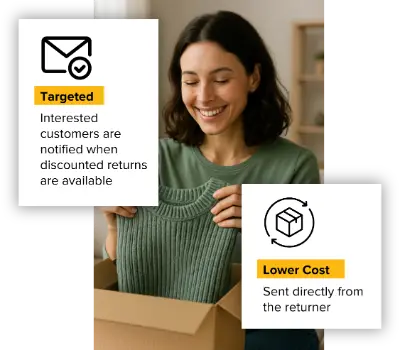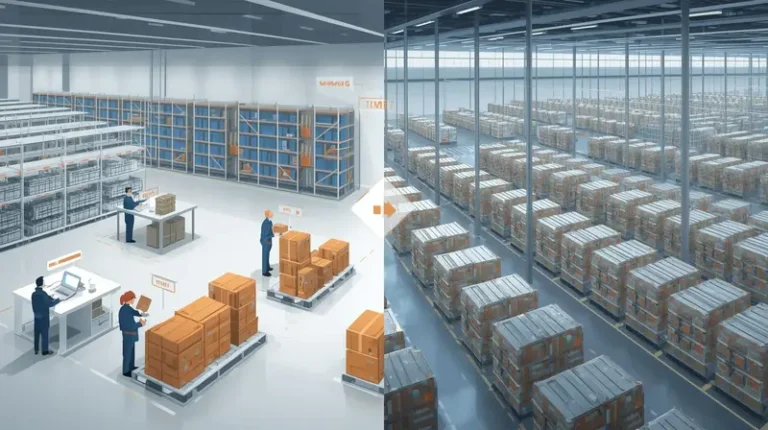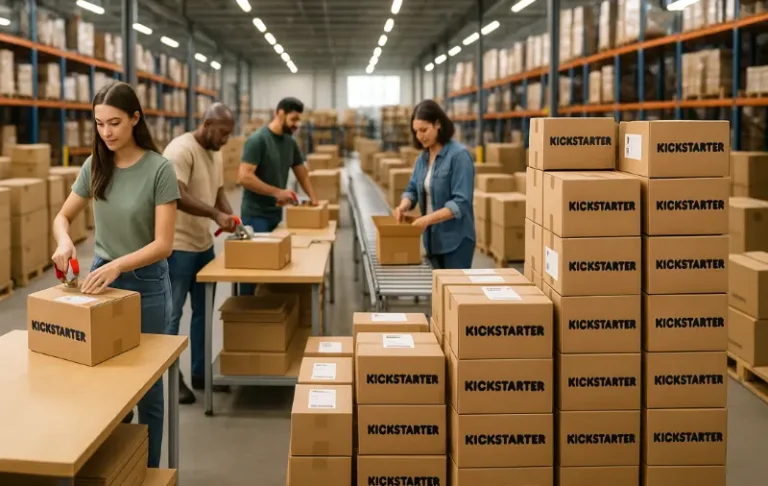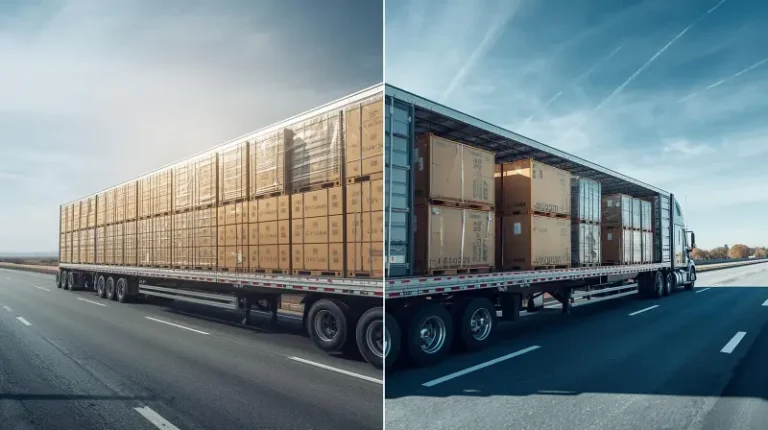Peer-to-Peer Order Fulfillment for Efficient and Affordable Shipping

Last updated on April 14, 2023

In this article
 24 minutes
24 minutes
Listen to podcast here.
Podcast: ProShip ParcelCast Episode 23: What is a Peer-to-Peer Order Fulfillment Network?
Cahoot AI founder Manish Chowdhary discusses the need for distributed order fulfillment and the benefits of a peer-to-peer order fulfillment services network on a podcast. The network is a platform where eommerce brands and retailers collaborate to speed up order fulfillment and distribute inventory closer to the customer. The objective is to reduce shipping costs and improve customer experience with better and faster shipping. Distributed order fulfillment is the process of making free and fast shipping feasible and affordable for the retailer by placing inventory closer to the customer so that items can be shipped using affordable and inexpensive ground services rather than long-distance air that can be two to four times more expensive. An ecommerce brand or a retailer just needs four to five strategically located warehouses throughout the US to achieve two-day nationwide delivery guaranteed and nine warehouses to achieve one-day delivery like Amazon. Retailers have the option to build their own warehouses, lease them, sign up with multiple third party logistics (3PL) companies, or join an order fulfillment services network like Cahoot.
Justin Kramer:
Welcome to the 23rd episode of ParcelCast, what is a peer-to-peer order fulfillment services network. I’m your host, Justin Kramer, co-founder of ProShip. And with me is my special guest, Manish Chowdhary, founder of Cahoot AI, a distributed shipping software and peer-to-peer order fulfillment services network. Manish, could you take a second to introduce yourself and your company?
Manish Chowdhary:
Absolutely, Justin. Thank you for having me. First of all, my name is Manish Chowdhary, I’m the founder and CEO of Cahoot. Cahoot is the world’s first peer-to-peer order fulfillment services network. In simple words, it’s a collaboration platform where brands and retailers collaborate to speed up fulfillment and distribute inventory closer to the customer so that we reduce the shipping cost and also improve the customer experience with regards to better and faster shipping for the end consumer.
Justin Kramer:
You know what, let’s take that further. Let’s go ahead and talk about the need for distributed order fulfillment. We hear about it a lot. Can you explain to us what it is, and what our retailers’ options are nowadays?
Slash Your Fulfillment Costs by Up to 30%
Cut shipping expenses by 30% and boost profit with Cahoot's AI-optimized fulfillment services and modern tech —no overheads and no humans required!
I'm Interested in Saving Time and MoneyManish Chowdhary:
That’s a great question, Justin. Distributed order fulfillment is nothing but a methodology on making the free and fast shipping feasible and affordable for the retailer. When the consumers order stuff online, especially on sites like Amazon, they are conditioned now to expect free two-day delivery. In fact, Amazon has raised the bar on making it free one day delivery with Prime. Almost one-third of all Amazon Prime items get delivered in one business day, which is astounding. And for Amazon, business day is Monday through Sunday, so it’s not even business day anymore. And that’s the expectation that the consumers have with every ecommerce brand, every retailer. And for the brand or the retailer to make that affordably happen is bring the inventory closer to where the consumer is located so that item can be shipped using affordable, inexpensive ground service. As opposed to the long distance air, which is in on average two to four times more expensive than the economy ground shipping. So distributed order fulfillment is basically placing your inventory smartly closer to your customer so you can achieve one-day, two-day delivery without breaking the bank.
Justin Kramer:
Awesome, awesome. What kind of tools, technologies, and SLAs should we expect from something like this if I’m a mid-size retailer looking to get into something like this?
Manish Chowdhary:
You essentially have three options. One, you can go and build additional warehouses, and these are warehouses that need to exist at strategic locations. Meaning, having a warehouse in Wisconsin, for example, is not going to be very effective because that’s not where the large population lives. Of course, tri-state area, New York, New Jersey, closer to the port, that’s where a lot of the inventory from overseas come in. But also it’s a very densely populated region. And so is Southern California like Los Angeles, Long Beach, Orange County. And then of course the upper Midwest like Chicago and so on. In order to achieve two-day nationwide delivery guaranteed, a brand or a retailer needs four to five strategic warehouses throughout the nation. And if you wish to achieve one-day delivery like Amazon, you need nine warehouses strategically located in the US. And I mean strategic.
If you had a warehouse that is not in a strategic location, you’ll need many more. And so you have options. Your options are you’re going to go build these warehouses, which is very capital intensive, and you don’t know what the market is going to look like. And then also it’s getting the permits, getting all of this takes a very long time. Second option is to lease it. Again, same problem, you’ll need to enter into long-term leases because warehouse spaces in such short supply, which also is a pretty large commitment and investment. The third option is you have to go and sign up with multiple 3PLs. Because two-thirds of the 3PL, or third party logistics companies, the companies that professionally provide order fulfillment services to brands of retailers in the US are mom and pop, two-thirds. The remaining one-third are the largest of the world.
Those are the people that become the landlord to Amazon and Macy’s and others, which are largely out of reach for most mid-sized sellers. So now you need to go and negotiate and acquire these multiple 3PL with different agreements, different contracts, and then you need the technology to glue it all together because there is no [inaudible 00:05:05] to choke, so as to speak, if there’s a problem. And so all of this creates a huge burden, a huge investment for the brand or the retailer to achieve. Or the fourth option, which is really a more newer and emerging option, is to join a contract with an order fulfillment services network such as Cahoot. And there are a few others that has nationwide footprint, that has multi dozen warehouses that can achieve that delivery target, that SLA seamlessly. So that’s another option.
Justin Kramer:
You talk a lot about Amazon. Is Amazon Prime a distributed order fulfillment services network? Is that something that people are looking at at the… Or should I say, is that something that is the high end of what we’re talking about?
Manish Chowdhary:
Amazon FBA, which powers the Amazon Prime program, fulfillment by Amazon, is by far the largest distributed order fulfillment services network in the world. Not only the US. They have over 120 warehouses, not to count the sortation facilities and other cross stock facilities in the US. Amazon invested more during the pandemic in building out their fulfillment services network than they had invested in the previous 18 years. So the amount of money and resources that Amazon poured in 2020 and 2021, and also part of 2022, dwarfs the investment… Almost, they increased their footprint three times, and that’s why we heard some headlines about Amazon over building and they needed to rent out. Those were some headlines. And then trying to optimize their cost, laying off workers, closing down facilities. Amazon, like many of the other brands and retailers had overbuilt. But Amazon is by far the largest distributed order fulfillment services network in the world.
Justin Kramer:
If I’m a growing retailer and I’m looking to get into something, how is all this power that Amazon has, how does that impact me?
Manish Chowdhary:
Absolutely. Suffice to say that nearly every brand, every retailer should have an Amazon strategy. It’s hard to ignore Amazon is a sales channel when 60% of all e-commerce searches begin on Amazon, not on Google. Even whether you like Amazon or you don’t like Amazon, the reality is millions and millions of consumers go to Amazon every single day. And if they can’t find your products there, then that’s a problem, because you may be missing out on a big opportunity. A big, large segment of your target audience and population. Amazon does many things really, really well. And Amazon being the largest order fulfillment services network, but also Amazon Prime is the largest loyalty program in the world. By a long shot, you’ve got over 130 million, I don’t even have the real numbers as of now, but over 100 million subscribers that pay $120 a year to Amazon, and they get a whole host of benefits.
And the biggest benefit of it all is the free one-day, two-day delivery with no minimum. So you could literally order paperclips on Amazon, have it delivered the next day, and not pay anything for delivery because you’ve already paid into the membership program. So that is what consumers love. And while Amazon FBA is great at many things, and I can cover this if you like, I can elaborate on it. It’s not the be all and end all. It is good for many times, however, it has its own set of challenges that the retailers and ecommerce brands must be aware of.
Justin Kramer:
Let’s go ahead and ask one last question. Let’s talk about Buy With Prime. Can you tell me what the larger impact is of this program on e-commerce as a whole?
Manish Chowdhary:
That’s an excellent question, Justin. Buy With Prime launched in April of this year, this is something that has been a long time coming. As you and others listening may be familiar with, Amazon does everything at very large scale. They perfect a service first for themselves, and then they look to monetize that across the entire business ecosystem. And that’s exactly what Buy With Prime is. Buy With Prime is Amazon’s initiative to become even larger third party logistics company where Amazon will extend its Prime membership to other channels other than Amazon. Let’s say you have a website that is hosted on Shopify or on Magenta, or any website, you could install a Buy With Prime logo, a button, and you can send that inventory to Amazon FBA, and the consumer can now check out using the familiar Amazon account and get that product in one or two days.
Buy With Prime essentially extends all of the Prime benefits to websites other than Amazon. And we already seeing many, many sites that have adopted and embraced this because Amazon makes it so easy for the brands and retailers to fulfill their orders. And if brands and retailers that are heavy into FBA that sell a lot on Amazon for them, it’s a no-brainer. And so what the term or the phrase that I like to use here is, gradually and then suddenly. Up until now, consumers have been expecting the Prime benefits or one-day two-day delivery only on Amazon. But now let’s take an example. If you are a shoe retailer, and there are two of them, Acme Inc and ABC Inc. Acme Inc starts providing Buy With Prime on their website, and ABC Inc does not. Now as a consumer, I’m more likely to go check out from here, if all things being equal. So this is going to lead to this massive adoption and even acceleration of delivery expectation among consumers, because they now expect that same Prime-like experience on every channel they shop on.
Justin Kramer:
Interesting, interesting. Okay, let’s go ahead and switch topics here. Let’s talk about this new fulfillment economy and the workshare model. To the average logistics persons, companies like Gap, American Eagle, Quiet Logistics, Airterra, they were offering something very similar to what it sounds like the Cahoot network is offering. Can you talk to us a little bit about the similarities and the differences?
Manish Chowdhary:
Yeah, this is a new development that’s happening in the e-commerce and retail logistics space. Cahoot was of course the pioneer in peer-to-peer collaboration. And essentially, Cahoot acts as a neutral third party where there are plenty of merchants. There are about three million online merchants in the US compared to about 20,000 3PL companies. So these are third party logistics companies that will provide fulfillment as a service. By sheer comparison, and the analogy I’d like to make is Airbnb versus Hilton. There are many more homes with spare bedroom and a spare wing than there are hotel rooms in the US. Rather than building more warehouses where rooms are going empty, or the space is going empty in these millions of warehouses. Cahoot is aiming to bring these surplus capacity into the market so as to reduce the cost and improve utilization. This goes hand in hand with trying to make the most or more of what resources we already have, as opposed to trying to spend more capital expense, which essentially increases the cost one way or the other for the brand or the retailer.
What Cahoot has done is created a network of very highly qualified, highly vetted brands and retailers that do a spectacular job of order fulfillment for themselves, but that have extra capacity, let’s say 5, 10, 50, 20, 100,000 square feet of excess capacity. For the very first time, they can join the Cahoot network and monetize that excess capacity by fulfilling orders for other brands. And Cahoot acts as the independent governing body with the technology, the software, so that it is not a distraction for them. It is simple, it’s easy, and it’s effective. And it also gives the seller, the brand, our customer, the assurance that we are holding everybody accountable. And there is harmony and there’s SLA being delivered. And so it’s very exciting to see other retailers like Gap and American Eagle finally come to embrace the model that we’ve been preaching for a long time.
And the one difference, there’s not a lot we know about these models because there’s not a lot published on them because it’s still a closed system. But one thing, suffice to say that most brands, most retailers would prefer an independent body to audit the service provider. And that’s the advantage that Cahoot provides, because Cahoot is not representing just the buyer or just the warehouse. Cahoot is the independent body that keeps everybody organized and creates a common rule and level playing field for all the participants, and provides the visibility. That’s the one thing that I personally believe that having that independent body is a very crucial, it provides trust, it provides visibility, and it provides the assurance and it provides accountability. We would very much welcome Gap and American Eagle to join Cahoot so that we can give that assurance to small and large size retailers.
Justin Kramer:
And it also sounds like if I’m a Cahoot member I can now more easily expand to those five to nine distribution points so I can have two-day or next day delivery for most of the country.
Looking for a New 3PL? Start with this Free RFP Template
Cut weeks off your selection process. Avoid pitfalls. Get the only 3PL RFP checklist built for ecommerce brands, absolutely free.
Get My Free 3PL RFPManish Chowdhary:
Absolutely. The whole idea is, how do we create a Prime-like network and Amazon FBA-like network without the challenges that FBA faces? FBA is great at many things, but it does not… Even to this day, many, many sellers could not get their inventory into FBA on time for the holidays. They had limits placed on their account that they could only send so many units, and they rely on other networks like Cahoot to fulfill even their orders on Amazon. While Amazon is growing, they’re launching all these services, it has its own set of challenges. Amazon is not geared for all things to everyone at all time because Amazon only wants fast moving inventory. But from a retailer’s perspective, they also need to fulfill their wholesale orders, they need to fulfill orders from Walmart. Which, you cannot use FBA to fulfill, it’s against Walmart’s rules and policies that you cannot have a Amazon branded box being delivered to the Walmart customer that bought the item on the Walmart marketplace. And rightfully so.
Justin Kramer:
Let’s switch over to some other networks that sound like they’re similar. I know that the carriers, some of the airlines, and other particular merchant groups have some stuff similar to this. Can you talk about that and compare and contrast a little bit for us?
Manish Chowdhary:
Absolutely, Justin. The idea of coopetition has existed for a long time, where seemingly retailers may consider themselves to be competitors, but not necessarily. Because a retailer who has a warehouse in New York is really not competing with the retailer of a different product with a warehouse in California. It is in their interest to collaborate so that both of them win because they are not competing. And so we know of many, many very successful networks of this kind, going back to the, let’s take airline co-share. Not every airline flies to Maui, Hawaii. But if you want to get from Chicago to Maui, you might have to go from Chicago to Dallas, or Chicago to LA, and then LA to Maui, for example. For example, Delta, as part of the Sky team has many other airlines that share the code and so on.
So this is very, very common. It makes the airlines be profitable and able to service the needs of the customer. Because ultimately about getting to Maui, not about how many websites and tickets you need to buy separately. Likewise, we also know for examples in the flower delivery space, the FTD. Which is if I want to send flowers, I’m in New York and I need to send flowers to my sister-in-law in Palo Alto in California. Of course the local florist is not going to be the one delivering, but as part of the network, they can easily arrange for someone locally to deliver. And we’ve always known about the workshare model in the carrier space, which we know that USPS has long had workshare programs with UPS, FedEx. Programs like UPS Mail Innovation, FedEx Smart Post. Cahoot is simply extending the same concept to the world of order fulfillment and warehouses. Because ultimately, when there is greater utilization of resources that we have, that leads to a better experience and lower cost for all the participants involved.
Justin Kramer:
Very interesting, very interesting. Manish, can you tell our audience, what is a peer-to-peer order fulfillment services network?
Manish Chowdhary:
A peer-to-peer order fulfillment services network is a large scale nationwide network of warehouses that allows a ecommerce brand or retailer to compete at the level of Amazon Prime, which is one-day, two-day free delivery. Every brand, every retailer should be offering the service on all channels that they serve. And they can easily achieve that by joining Cahoot, because Cahoot has the number of locations and the diversity to place the inventory closer to the customer so that the items can be delivered inexpensively and fast without incurring additional cost. And on the fulfillment provider side, if you are a brand or retailer that has, owns, or operates a warehouse and has spare capacity, be it 5,000 square feet or 50,000 square feet, and you would like to monetize that excess capacity, excess space, please come check out Cahoot.ai and fill out a contact us form so you can apply to become a Cahoot fulfillment partner.
And we would love to speak with you, because we would love to add more warehouses to our network. So you benefit not just by providing faster and cheaper delivery to your customers, but also by monetizing your spare capacity so you make more out of your existing fixed investments.
Justin Kramer:
Excellent. Let’s go ahead and let’s move on to the changing base of reverse logistics. Let’s face it, over the last several years we’ve seen companies try to return everything. We’ve seen companies try to return nothing, just ask the customer to throw it away. But one way or another, we all know that reverse logistics is a huge part of the customer satisfaction story when it comes to e-commerce. Can you tell us a little bit more about it?
Manish Chowdhary:
Yes, Justin, this is of course when e-commerce was only 1% of total retail. Brands and retailers were motivating customers to shop online because it was, so-called it was a channel shift. It was giving customers more self-service option. It is akin to motivating customers in the grocery stores to do self-checkout now, you try to encourage them. And of course consumers got very, very much used to… And in order to do that, they offered free shipping on the way in, and they also offered free returns. Because it was one of those taking away the friction in online shopping that if you didn’t like something you could return it for free and no questions asked. Of course, that was intended to be simply an encouragement for the consumers to shop online, and which quickly changed into the concept of showrooming. It’s essentially consumers, especially in the apparel space, buying three items with the intention of only keeping one.
And because items are free to return, you could simply return it back. This went on for over a decade now, and sites like Amazon, or when the products are rather inexpensive, it costs more to ship them back and process that item that is returned than to let the customer keep the item. However, we are entering a new phase and we can see that with the brands like Zara and Gap and others that are cramping down and they’re saying enough is enough. There have been chronic people that constantly return items that is playing a havoc on the profitability of these companies. Essentially, the movement has already started, and some of the top brands and retailers have taken a lead that now if you want to return the item back to Zara, you’re going to have to pay a return fee, or you have to pay cover the cost of shipping. I think they’re going through a natural leveling of consumer expectations. And I don’t expect free returns to loss for most items in the next couple of years, that’s going to change quite dramatically.
Justin Kramer:
That will be very interesting, no more free returns. I know companies like Zappos, that’s exactly how they made their name in the market was you could bracket, by the size above, the size below, and get to choose what you wanted. Very interesting. Are you seeing this anywhere yet, or is this an expected 2023 trend?
Manish Chowdhary:
No, we heard from folks like Zara and others that they are already beginning to charge for returns. This is already in play now. It’s just not an idea or a thought. And of course, it takes a little bit of the top leaders to take a position and then others will follow. I expect of course, Amazon being the big bellwether, it remains to be seen what Amazon Prime is going to do because I think they constantly set the bar, so we’ll see. But also from a sustainability standpoint, Justin, this is not just about the cost. But if we encourage people to return, we are adding more carbon emissions. I think there will be brands that would take a stance that it is not just good for e-commerce, but it’s good for the planet. I do expect that the scales to be tilting in this direction not too long from now.
Scale Faster with the World’s First Peer-to-Peer Fulfillment Network
Tap into a nationwide network of high-performance partner warehouses — expand capacity, cut shipping costs, and reach customers 1–2 days faster.
Explore Fulfillment NetworkJustin Kramer:
Yeah. And I have to say, I think you’re right. Because you do see even Amazon in their partnership with stores like Kohl’s wanting you to just take it to that store where you’re already going to be, rather than putting it in its own, usually oversized box, sticking a label on it, and having it take up space on a truck or a trailer somewhere. All right, let’s move on to final thoughts. Question for you, is there any takeaways you want to make sure that our listeners have heard today and that they action against?
Manish Chowdhary:
My recommendation to all the listeners is that free and fast delivery, free one-day, two-day delivery is here to stay. And it’s not just on Amazon. Any channel that you’re selling on, you’ve got to embrace distributed order fulfillment. How you do it, there are four options as we covered earlier in the podcast. It is crucial in order to maintain your competitive positioning and also maintaining the consumer expectation, which is changing very rapidly. And especially with Buy With Prime program, which is going to launch, or rather, get rolled out quite aggressively in 2023. You want to get ahead of that. I would very strongly encourage to get a head start in 2023 and test this out, and make sure you have this systems and technology and your fulfillment and your providers figured out. And if you have spare capacity, why not put that to good use? Energy costs are all time high. So if you can make an extra income from your existing investments, that’s good for you, but it’s also good for the planet.
Justin Kramer:
Agreed. The one thing I took away from this, I’m going to try to narrow it down to a sentence. In the past we’ve always had buy, lease, or outsource. Right? But with a peer-to-peer network, we now have a fourth option. We can buy, we can lease, we can outsource two or 3PL, or we can collaborate with other like retailers. Is that correct?
Manish Chowdhary:
That is absolutely correct, Justin. I think we are all in this together, and that’s why our tagline, Cahoot’s tagline is Power of Many. It’s brands of retailers helping each other.
Justin Kramer:
All right. If you’d like to learn more, please visit us at proship.com or cahoot.ai. Thank you for joining us today. If you have any questions, just a reminder, you can reach ProShip at sales@proshipinc.com, or (800)-353-7774. We hope you join us for our next ParcelCast. Thank you for tuning in.
Turn Returns Into New Revenue
